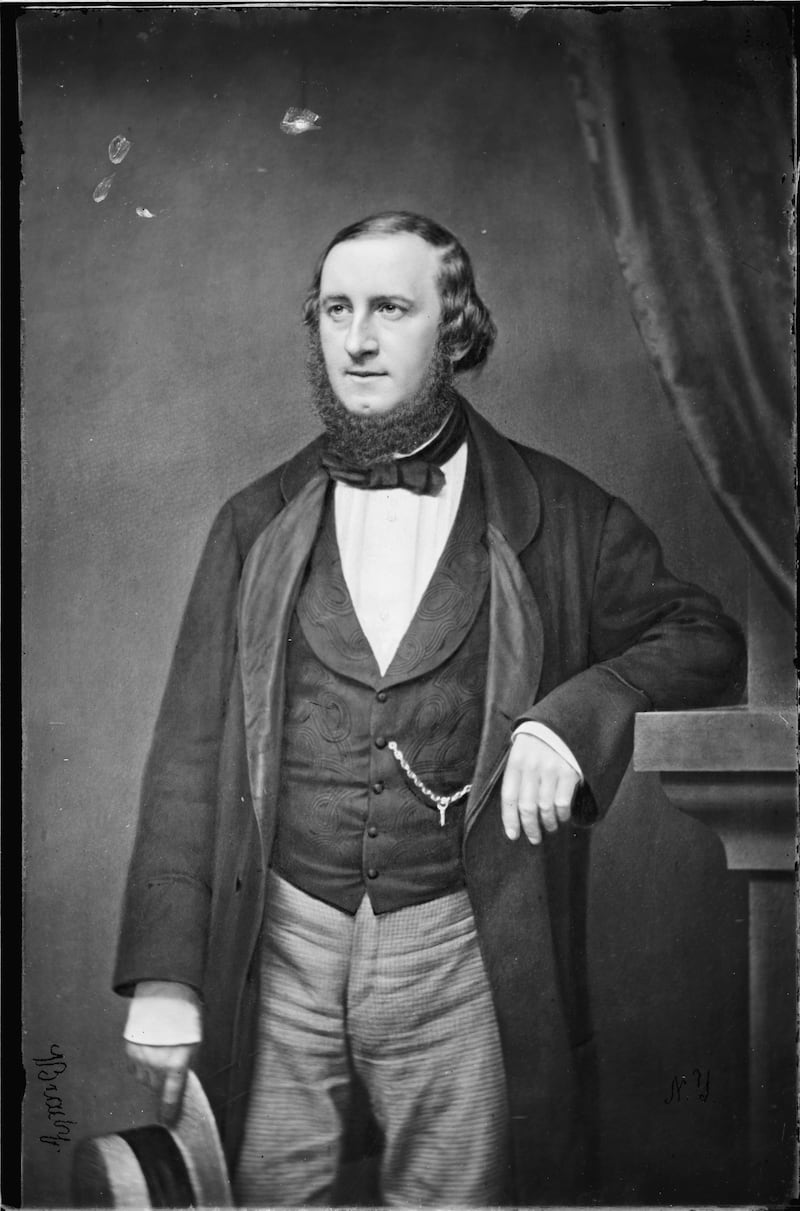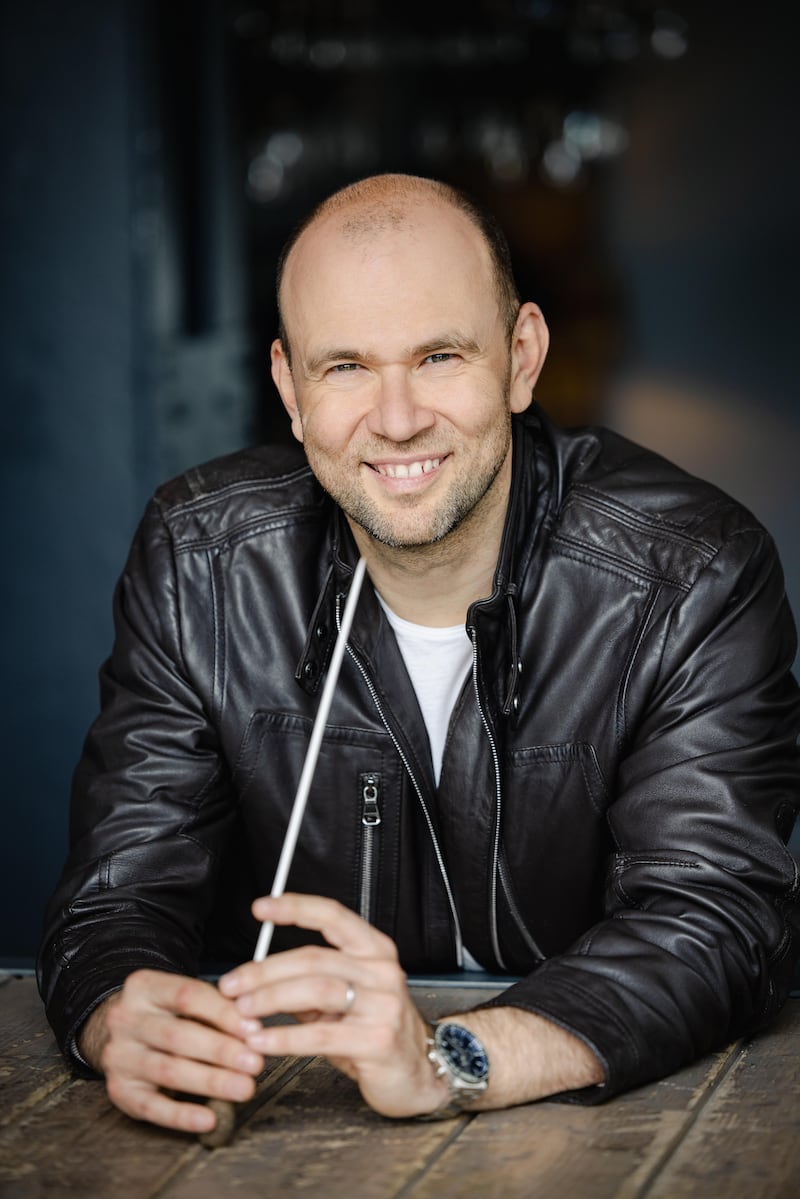Una Hunt, the woman behind the National Symphony Orchestra’s new performance of William Vincent Wallace’s Lurline, came first to the composer through his piano music. After all, it was as a pianist that she trained and first made her mark on Irish musical life in the 1980s. When she first encountered Wallace’s music, she says, she was won over by his “fantastic ability to write lyrical piano music. I didn’t know anything about Lurline or about The Amber Witch, which was apparently the most ambitious opera written in the English language in the 19th century. And because it lasts five hours and nobody’s ever going to produce it again.”
Wallace (1812-1865), from Waterford, and Michael William Balfe (1808-70), from Dublin, were leaders in 19th-century opera in the English language. If anyone knows only two operas from that area of repertoire they will almost certainly be Balfe’s The Bohemian Girl (1843) and Wallace’s Maritana (1848).
But 19th-century English opera is not exactly popular or widely appreciated any more. Lurline, which Wallace began composing in 1847 and was first produced in 1860, was last produced in Dublin by the Dublin Operatic Society in 1939, when this newspaper reported on a litany of singer illnesses so severe that “it was a tribute to the fighting spirit of the Society that the opera was produced at all”.
Wallace, as Hunt enthusiastically points out, was a double virtuoso. He performed not just on the piano but also on the violin – Paganini’s 1831 visit to Dublin was an inspiration – and he was celebrated enough in the 1850s for his work to feature in concerts by the New York Philharmonic Orchestra.

The New York exposure was the fruit of his extensive travels. Before he first appeared in the city, in 1843, he had already left his mark on Tasmania, Sydney (where he abandoned his wife and son and left debts of about €220,000 in today’s money), Valparaiso, Santiago, Buenos Aires, Lima, Jamaica, Cuba, Mexico City, New Orleans, Philadelphia and Boston. He went on to perform in Germany and the Netherlands before finally appearing in London in 1845.
In Ireland, as an 18-year-old, he had been organist of Thurles cathedral and also taught at the Ursuline convent there, and he had been a violinist at the Theatre Royal in Dublin. On his international travels he had been known to play two concertos, one each on violin and piano, in a single concert, and would perform his own Cracovienne on violin or piano. He is still celebrated as the first outstanding instrumentalist to visit Australia, as an important educator in Sydney and as a contributor to the development of Chilean music.
The Australian conductor Richard Bonynge, husband of the late Joan Sutherland, recorded Lurline with the Victorian Opera Chorus and Orchestra for the Naxos label in “a new performing edition” in 2009. Hunt’s version will include rather more music than that. She wants to present it as a “proper grand opera”, an artistic statement that places it well outside the English-language opera conventions of its time.
It’s a dramatic opera, she says. “It has tremendous choruses, great male choruses that really underpin the whole opera, and bring the drama to the fore.”
The story locks into the Lorelei legends of the Rhine. “The subject of water was very, very close to Wallace’s heart, because of his sea journeys all over the world and his lust for travel,” she says. “Act two, for instance, takes place almost completely underwater, in Lurline’s palace in the Rhine.”
Bonynge’s version, she says, “has cuts all through it”, but she has opted for “the complete opera, every note that Wallace has written”, in the hope that “an opera company might actually be able to make an informed decision about what cuts do we need to make, et cetera.” The scholarly work has been carried out by Valerie Langfield, who also prepared material for the recordings of Charles Villiers Stanford’s Shamus O’Brien and Balfe’s Falstaff.
The work’s big weakness, says Hunt, is not musical. It’s the language. “I think every Wallace aficionado will tell you the same thing. And it goes for all the other English-language operas of the 19th century, too. They loved using a sort of Shakespearean-type language. That seemed to be the popular thing at the time. And it now seems incredibly stilted. Even then it probably was stilted, but I think it was just the fashion. We have not altered the language very much apart from an occasional word which maybe was just so unknown that nobody now would have a clue what it was.”
The title role is taken by the Irish mezzo-soprano Rachel Kelly (Hunt’s daughter); the conductor is Péter Halász, principal guest conductor of the Hungarian State Opera. When he got the invitation from Hunt, he says, “that was the first time in my life, I have to admit, that I heard of Wallace. When I looked up the vocal score and the recording with Bonynge I realised that it sounds like Carl Maria von Weber. I’m very fond of Weber’s music. I’ve already conducted Freischütz and Oberon with great enthusiasm.”
He says the music grabbed him. “The melodies are really wonderful. Also the orchestration. So it’s a very, very exciting score. And then I read about Wallace, and he was so very, very adventurous. It’s a really amazing story. He’s like a movie hero, travelling around the world and establishing an Australian musical academy and being taken up by the New York Philharmonic. It’s fantastic. Having two marriages [though he never got divorced]. I mean, he’s a fantastic, radiant personality.
“I can feel this internationality in the music,” he says. “And that’s very fascinating for me. That there is not only Weber, there is Mendelssohn and Donizetti and Offenbach and the Strauss family. All those influences are in this score, a score from an Irish composer with a German plot. It’s fascinating. The score itself is very exciting for me, because he was a good orchestrator. It offers almost the same excitement as with the German early romantics. At the same time it’s a very light structure, somehow.
“So it’s melodic, not much counterpoint. And it has really a kind of fairy music, like in Mendelssohn. At the same time it’s a grand opera with big tableaux, big sounds sometimes, and big finales. So it’s at the same time a dramatic score and a light score. And it’s very logical. He’s very aware of all the specific instrumental colours. From a conductor’s point of view that’s always a very good point.”

Halász agrees that the performance of this kind of music is something of a lost art, that it needs a different style of nuancing. He offers the German composer Albert Lortzing (1801-1851) as another example. “People seem to think that all those early romantic operas should be interpreted from the perspective of Wagner and not from an earlier musical perspective. It should not sound static, not at all. When I was studying the score I was immediately thinking about Lurline’s wonderful overture. It’s very vivid, and it’s a real curtain-raiser. And we could start a symphony concert easily with this also in Budapest or in Germany.”
For Halász, Lurline is in his work schedule between Verdi’s La Traviata in Düsseldorf, the first Hungarian performance of Dvořák’s Rusalka (a work that has twice been produced in Ireland), Richard Strauss’s Arabella and a production of Puccini’s Turandot in which the audience will get to see both the traditional ending prepared by Franco Alfano after Puccini’s death and the longer ending by Luciano Berio. Not a context in which anyone will ever have experienced Lurline before. It is, he says, “a fantastic adventure and a great privilege” to be bringing Lurline back to life in Ireland.
Lurline, with Rachel Kelly, Ashley Riches, Luis Gomes, Gemma Ní Bhriain, Thomas D Hopkinson, Rory Dunne, Anna Brady, William Pearson and the National Symphony Orchestra and Lurline Chorus under Péter Halász, in a concert performance with movement and lighting by Vivian Coates and imagery by Roberto Recchia, is at the National Concert Hall, Dublin, on Friday, July 26th


















